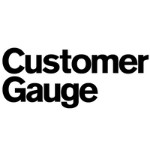Hey there, fellow brand enthusiasts! 🚀 Let’s set the stage for a moment. You walk into a store or browse online, and certain brands instantly capture your attention. Now, ask yourself – why? What makes you remember Apple over another tech brand, or choose Coca-Cola over an array of other sodas? While their vibrant advertising, quality of products, product and service offerings and maybe even a catchy jingle contribute, there’s another element at play, often behind the scenes, yet tremendously influential. That element, my friends, is an effective positioning statement.
As you sip your coffee and scroll through this post, you might find yourself musing, “Hold up, what is a brand positioning statement?” or “Why all the fuss around it?” Or maybe you’ve heard of it but haven’t given it the attention it deserves. Either way, I’ve got your back! In this deep dive, we’ll be unraveling the mystery behind this vital component of branding. We’ll explore its essence, its power, and most importantly, how you can craft good brand positioning statement, one that resonates and sticks.
Think of key elements of a brand positioning statement, as the DNA of your brand. Just like how DNA makes you uniquely you, a strong brand positioning strategy or statement gives your brand its distinct identity. It’s more than just a fancy marketing term; it’s the backbone of your brand’s presence in the market. As we continue on this enlightening journey, you’ll not only understand the what and why, but also the how. How do you create a brand positioning statement that’s memorable, effective, and perfectly aligned with your brand ethos core values?
So, whether you’re a seasoned marketer, a budding entrepreneur, or just curious, fasten your seatbelts. We’re about to embark on a captivating journey into the world of brand positioning statements. Here’s to clarity, creativity, and branding like a pro!
Positioning statement examples shed light on how top brands distill their essence unique selling point and value proposition into a concise message. Dive into creating these statements and understand their power in guiding brand strategy, promise, value proposition, brand communication and identity.

What is a Positioning Statement?
At the core of any branding strategy, there lies a good positioning statement outlines a unique sentence or two that perfectly encapsulates a brand’s essence. Enter the “Positioning Statement.” A good positioning statement is like the lighthouse guiding the ships; it defines the direction in which a brand should move to be perceived correctly by its own target market, customers and audience. Essentially, it’s the brand’s declaration of its unique space in the vast sea of the market.
The Essence:
The term ‘positioning’ might conjure images of placing something physically, but in the branding world, it’s all about mental space. How do you want your product or service, and your product or service, offerings or brand to be positioned in the minds of your consumers? What should they think of when they hear your brand’s name? The answers to these questions are what your positioning statement seeks to define. It goes beyond just marketing pitches and taglines; it’s about the emotional and functional benefits your brand offers.
The Importance:
Imagine going on a road trip without a map. Sounds adventurous, right? But also chaotic. A positioning statement acts as the roadmap for all your branding and other marketing strategies and efforts, ensuring every action and campaign aligns with the brand’s own core values and message. Without it, brands can quickly lose their way, sending mixed or unclear messages to their audience. It not only ensures consistency across various platforms but also helps to create a differentiated and compelling brand image that stands out from competitors.
The Components:
A robust positioning statement often consists of four main components:
Target Audience: Identifying the segment of the population that would be most interested in what the brand has to offer.
Frame of Reference: The category in which your brand competes or the context where your brand wants to play.
Differentiator: What makes your brand unique? How do you stand out in the crowded marketplace?
Benefit: What value or benefit does the target market derive from your product or service?
In essence, write a positioning statement that doesn’t just describe what you offer, but it pinpoints why it matters to your target audience and how it stands apart in the competitive landscape.
Key Points:
Positioning statements capture a brand’s essence and guide its strategic direction.
They help a brand occupy a distinct mental space in the consumer’s mind.
Positioning is more than just what you offer; it’s about differentiation and emotional resonance.
Four main components shape a strong positioning statement: Target Audience, Frame of Reference, Differentiator, and Benefit.

Crafting a Stellar Positioning Statement
The process of crafting a good positioning statement, can feel a bit like assembling a jigsaw puzzle. Each piece, while distinct, needs to fit perfectly to convey the complete picture. As you begin the journey of drafting this positioning statement template, remember that it’s not just about penning down catchy phrases but about delving deep into your brand’s essence and translating it into a concise message.
The Framework:
One of statement examples of the most widely accepted frameworks for a positioning statement goes as follows:
For [target customer], [brand] provides [key benefit] because [reason to believe].
This formula is both elegant and effective, creating a clear narrative about who you serve, what you offer, and why you should be believed.
Diving Deeper:
Target Customer: This isn’t just about demographics but psychographics. Dive into the lifestyle, beliefs, needs, and behaviors of the people you aim to serve. Are they busy moms looking for quick meal solutions? Or tech-savvy teenagers seeking the next big thing in entertainment? Pinpointing this ensures your message resonates with the right people.
Brand: It might seem redundant, but here’s where you assert your brand’s identity. Are you a luxury brand, a cost-effective solution, an innovative newcomer, or perhaps a trusted classic?
Key Benefit: Beyond features and specifications, what’s the real value you’re offering? Are you selling shoes or the confidence to stride into any room? Understanding this emotional or functional benefit is crucial.
Reason to Believe: In a world where skepticism is rampant, why should consumers believe your claim? Is it because of a proprietary technology, years of expertise, numerous satisfied customers, or maybe unparalleled after-sales service? This section should solidify your promise.
Continuous Refinement:
Crafting the perfect brand positioning statement isn’t a “one and done” task. As with any aspect of branding, it requires iterative feedback, testing, and refinement. What sounds good in a boardroom may not resonate in the market. Thus, be open to feedback, conduct market research, and be willing to tweak and polish until your own brand loyalty positioning statement shines.
Beyond Just Words:
A positioning and position statement really isn’t just a set of words—it’s a commitment. Once a brand identity position statement is crafted, it should guide product development, marketing campaigns, customer service protocols business best practices, and more. It’s the brand’s promise to its customers, and every touchpoint for customer satisfaction should reflect this promise.
Key Points:
Crafting a positioning statement requires a deep understanding of both your brand and your target audience.
The formula acts as a guide but needs tailoring to fit each brand’s unique context.
The process demands continuous refinement based on feedback and market response.
A positioning statement goes beyond mere words; it’s a commitment and should be reflected in every facet of the brand’s operations.

Positioning Statement Example: Real-world Applications
The concept of positioning statements, while rich and essential content marketing itself, is best understood when seen in action. Big brands, startups, successful brands and everything in between leverage these statements to solidify their brand recognition, unique value proposition, and stance in the marketplace. Let’s journey through some stellar examples to see the principles best positioning statements we’ve discussed come to life.
1. Apple’s iPhone:
Positioning Statement: For individuals who want the best personal computer, iPhone, designed with a focus on simplicity and intuitive functionality, delivers a uniquely sleek yet powerful device experience because of its unparalleled integration of innovative hardware, software, and ecosystem of mobile devices.
Breaking It Down:
Target Customer: Individuals who prioritize quality and leading-edge tech.
Brand: iPhone, an epitome of modern technology and design.
Key Benefit: A seamless blend of simplicity and powerful functionality.
Reason to Believe: Apple’s unmatched integration of hardware, software, and ecosystem.
2. Volvo:
Positioning Statement: For families who prioritize safety and reliability in their vehicles, Volvo promises unmatched protection on the road due to its decades of pioneering safety innovations and features.
Breaking It Down:
Target Customer: Safety-conscious families.
Brand: Volvo, a symbol of automotive reliability.
Key Benefit: Unmatched protection while driving.
Reason to Believe: Volvo’s long-standing legacy of safety innovations.
3. Warby Parker:
Positioning Statement: For stylish, socially-conscious eyewear consumers, Warby Parker offers boutique-quality glasses at a revolutionary price point, backed by a brand delivers exceptional customer experience highest quality materials and the promise of a pair donated for every pair sold.
Breaking It Down:
Target Customer: Trendy consumers with a heart for social impact.
Brand: Warby Parker, the modern answer to chic eyewear.
Key Benefit: High-quality glasses that don’t break the bank.
Reason to Believe: Their unique buy-one-give-one model.
These examples of positioning statements can provide just a glimpse into the vast world of positioning statements. Each brand, regardless fast food industry, beverage company or the fashionable athletic wear or apparel industry, of its sector or size, uses its statement as a guiding star, ensuring every action aligns with the image they wish to portray.
Key Points:
Big brands like Apple, Volvo, and Warby Parker leverage positioning statements effectively to carve their unique niches.
These statements distill the brand’s essence into a concise message, resonating deeply with their target audience.
Each component of the positioning statement plays a pivotal role in portraying the brand’s promise and vision.
Studying real-world examples can offer insights and inspiration for crafting your brand’s positioning statement.

Software Tools for Crafting Your Positioning Statement
With our digital age in full swing, it’s no surprise that there are tools and software available to assist brands in their quest for the perfect positioning statement. Whether you’re brainstorming, collaborating, refining, or testing, there’s a tool designed to make the process smoother and more effective.
MindMeister
MindMeister is an online mind mapping tool that allows internal teams to visually organize and generate ideas. For brands looking to deep dive into their essence, strengths, and differentiators, this tool provides a canvas to brainstorm and link interconnected ideas.
Why It’s Useful:
Visually represent your brand’s attributes.
Facilitates team collaboration in real-time.
Easily exportable for presentations.
Grammarly
While Grammarly is known for its grammar checking capabilities, its tone and clarity suggestions can help refine and polish your positioning statement, ensuring that it’s clear, concise, and error-free.
Why It’s Useful:
Instant grammar and spelling checks.
Tone detection ensures your statement aligns with the desired emotion.
Vocabulary enhancements to make your statement more compelling.
SurveyMonkey
Once you’ve drafted a full positioning strategy or write a positioning statement yourself, it’s essential to gather feedback. SurveyMonkey allows brands to create quick surveys and gather insights from their target audience or internal teams about the resonance and clarity of the positioning statement.
Why It’s Useful:
Easily create and distribute surveys.
Gather and analyze feedback data efficiently.
Split-test multiple positioning statements to see which resonates best.
Trello
Trello’s card and board system makes it an excellent internal tool, for organizing thoughts, feedback, and revisions during the positioning statement creation process.
Why It’s Useful:
Organize thoughts, drafts, and feedback in one place.
Collaborate with team members by assigning tasks and setting deadlines.
Use labels and filters to streamline the process.
Ahrefs & SEMrush
While these tools are primarily known for SEO, they can be instrumental in understanding keywords and phrases that resonate within your target market category, product or service industry. By researching these terms, brands can ensure their marketing hub positioning statement aligns with their target market and language.
Why It’s Useful:
Discover high-ranking keywords in your niche.
Understand language and phrases your audience resonates with.
Gain insights into competitors’ positioning.
While crafting the perfect positioning statement example, examples of positioning statements multiple marketing channels, and using positioning statement examples, largely depends on a brand’s introspection and understanding of its audience, these tools can significantly streamline and enhance the process, ensuring the end result is polished, effective, and resonant.
Key Points:
Modern software tools can aid in various stages of crafting a positioning statement, from brainstorming to refining.
Each tool offers unique capabilities, from mind mapping to feedback gathering to SEO insights.
Leveraging these tools can lead to a more refined, effective, and audience-resonant positioning statement.
Continuously evaluate and update your tools arsenal to keep pace with evolving needs and technologies.

FAQs on Positioning Statements
Positioning statements, despite their concise nature, carry a weight of intricacy and importance. As such, they often give rise to a host of questions. Let’s delve into some of the most commonly asked questions surrounding this crucial aspect of branding.
Why is a positioning statement important?
A positioning statement acts as a compass for a brand, guiding every decision from product development to marketing. It ensures consistency in messaging and helps a brand carve out a unique space in a crowded market, differentiating it from competitors.
How does a positioning statement differ from a mission statement?
While both are foundational to a brand, a positioning statement is about how a brand wishes to be perceived in the market. It’s external-focused, targeting customers. A mission statement, on the other hand, is internal-focused, detailing a company’s purpose, goals, and values.
Can a positioning statement change over time?
Absolutely! As markets evolve, consumer needs shift, or the brand itself undergoes transformation, the positioning statement might need refining to stay relevant and resonant.
How specific should the target audience be in the statement?
The target audience should be as specific as possible to ensure your message resonates deeply. Think beyond demographics and delve into psychographics, behaviors, and needs.
What’s the ideal length for a positioning statement?
Brevity is key. While there’s no strict word limit, a positioning statement should be concise enough to be memorable yet detailed enough to encapsulate the brand’s essence.
How do I test the effectiveness of my positioning statement?
Feedback is vital. Use tools like surveys, focus groups, or even one-on-one interviews with your target audience. Gauge their reactions, understand their perceptions, and refine accordingly.
Should my positioning statement be public?
Not necessarily. Unlike taglines or slogans that are public-facing, positioning statements are often for internal use, guiding strategy. However, elements of it can influence public messages.
How often should a positioning statement be revisited?
While there’s no fixed timeline, it’s wise to revisit it during major brand milestones, shifts in market dynamics, or when launching a new product line. Regular audits can also ensure its ongoing relevance.
Is it okay to have multiple positioning statements for different products or services?
Yes, especially for larger companies with diverse offerings. Each product or service can have its unique positioning, provided it aligns with the overarching brand identity.
Can startups benefit from crafting a positioning statement?
Absolutely! Startups, given their nascent stage, can particularly benefit from the clarity and direction a positioning statement provides. It can help them navigate market complexities and establish a strong foundation.
Key Points:
Positioning statements play a pivotal role in guiding brand strategy and perception.
They differ from mission statements in focus and purpose.
Iterative refinement, based on market and brand evolution, is essential.
Testing, specificity, and alignment with the broader brand identity are crucial components.
Both established brands and startups can immensely benefit from a well-crafted positioning statement.

Conclusion
The art of your own positioning statement as a brand is much like sculpting from marble. It’s an intricate dance of chiseling away what doesn’t serve the brand’s core essence and polishing what remains to perfection. The positioning statement is that gleaming masterpiece, a succinct yet powerful embodiment of the brand’s brand identity and promise.
Now, as we wind down our journey into the realm of brand positioning statements, it’s essential to take a moment and reflect. Reflect on brand positioning statement examples, on its incredible power in distilling a brand’s entire universe into a concise sentence. Reflect on its ability to guide every strategic decision, ensuring consistency and resonance. Reflect on its role as the North Star of content marketing everywhere, guiding brands toward their desired brand perception, in the complex landscape of consumers’ minds.
However, like any tool in the branding toolkit, a good positioning statement also isn’t set in stone. As brands evolve, as market dynamics shift, and as consumer expectations change, it might demand revision. This iterative process, this cycle of introspection and refinement, is what keeps a brand and position statement relevant and resonant.
To all the budding brand strategists, marketers, and business leaders reading this, remember the potency of a well-crafted brand positioning statement. It’s not just a line of text but a brand promise made, a commitment, and a declaration of your brand’s unique value proposition, unique selling proposition, and space in the market. So, approach brand positioning statement template its creation with the care, attention, and dedication it deserves.
And as you embark on align marketing efforts or continue on this exciting branding adventure, leverage the tools, insights, and examples shared. Let them inspire, guide, and support your marketing efforts, in shaping a positioning statement that not only sounds good on paper but resonates deeply in the hearts and minds of your audience.
Key Points:
Positioning statements are the distilled essence of a brand’s promise and identity.
Crafting it demands introspection, understanding, and commitment.
Its role goes beyond mere text; it’s a strategic guide for brand decisions.
Brands must be open to revisiting and refining their statements as they evolve.
Use the tools, insights, and real-world brand positioning statement examples as inspiration and guidance in your positioning journey.















